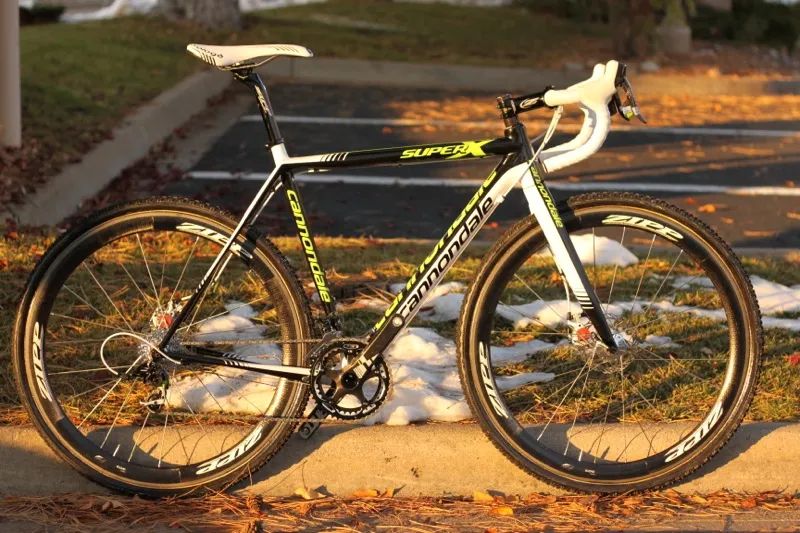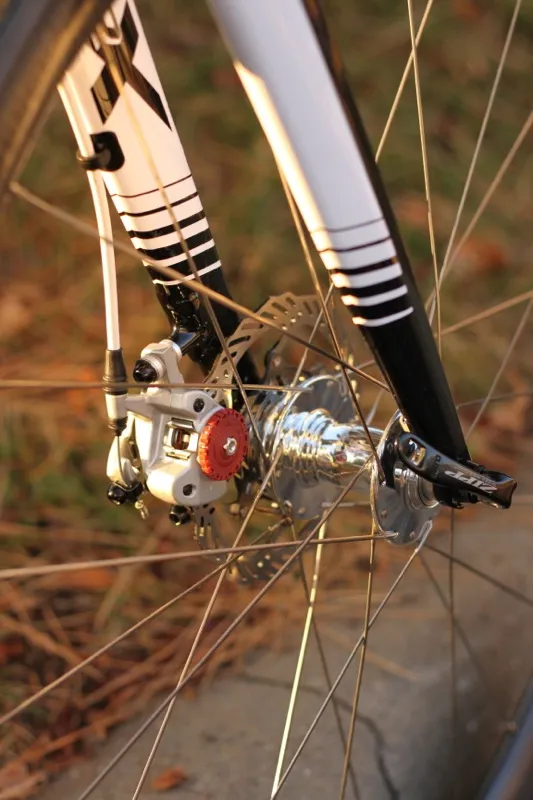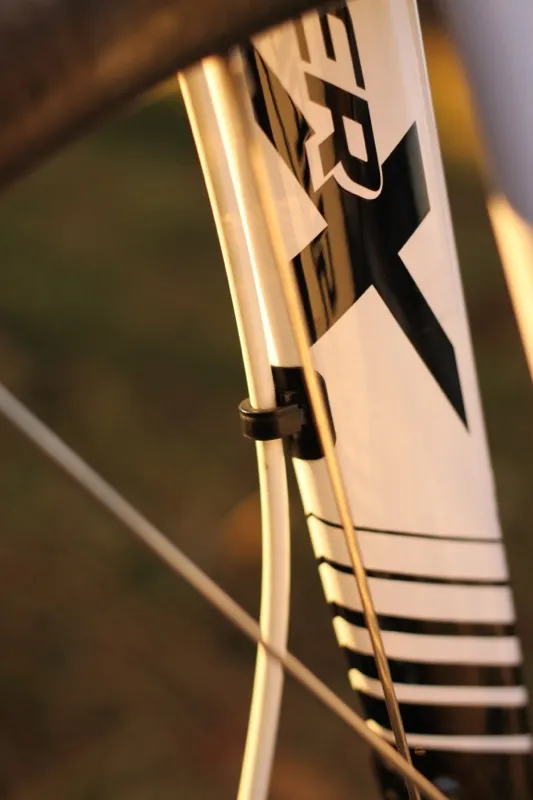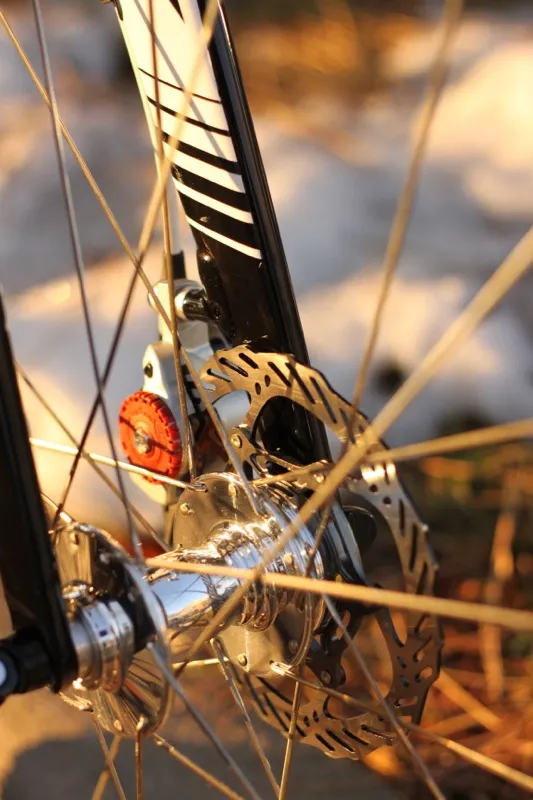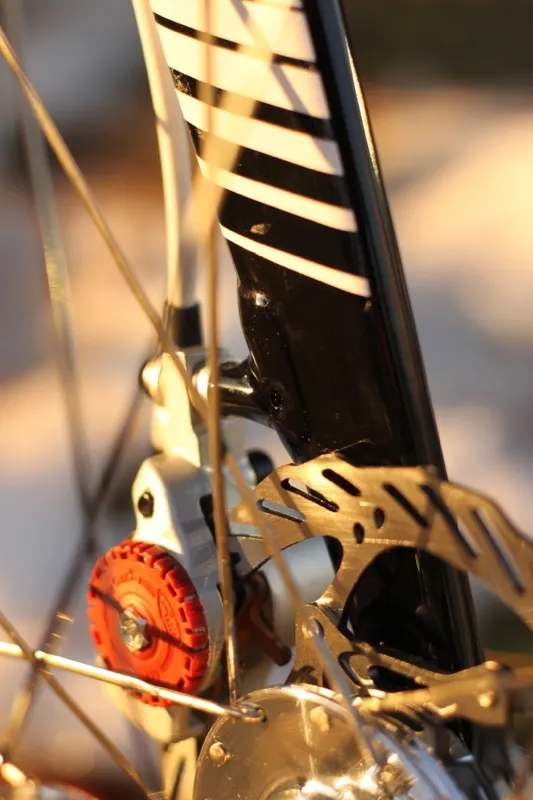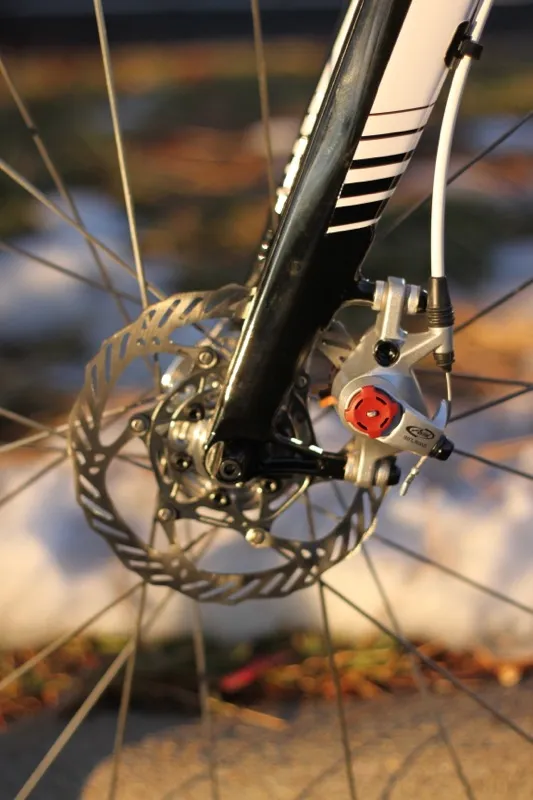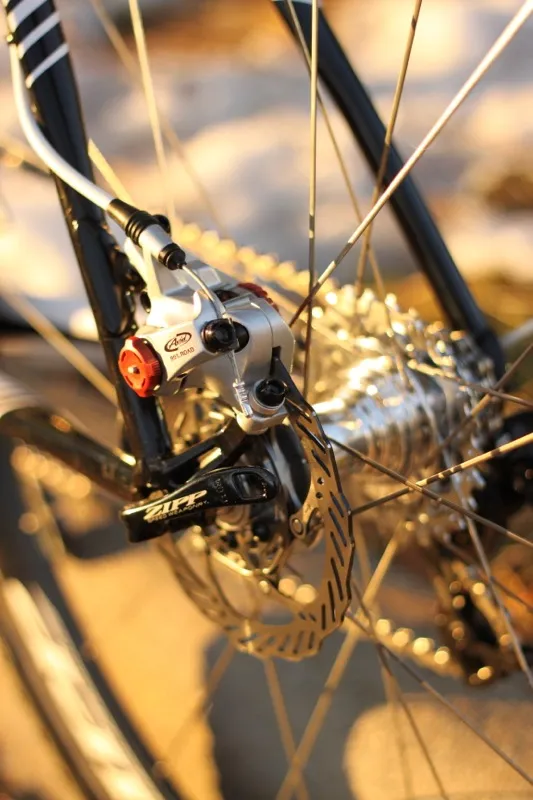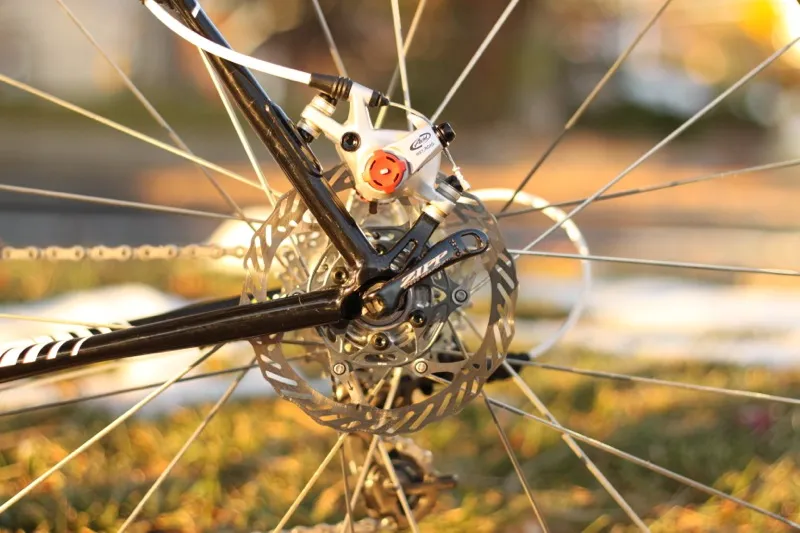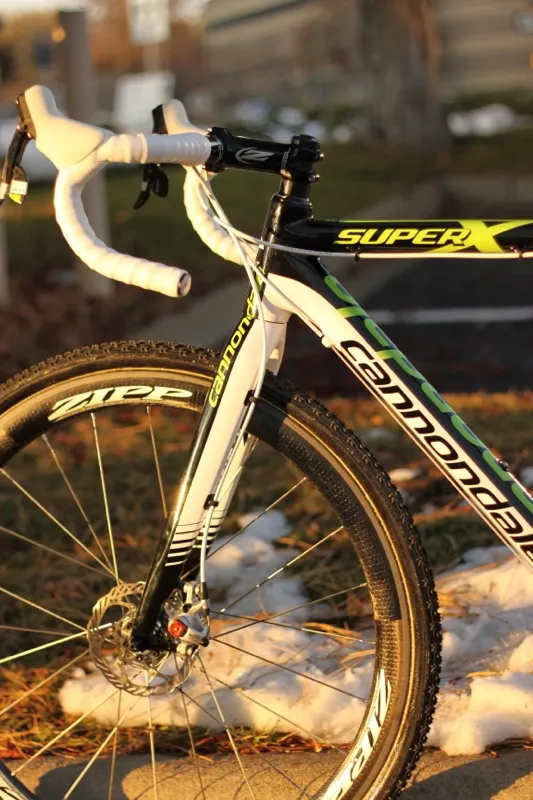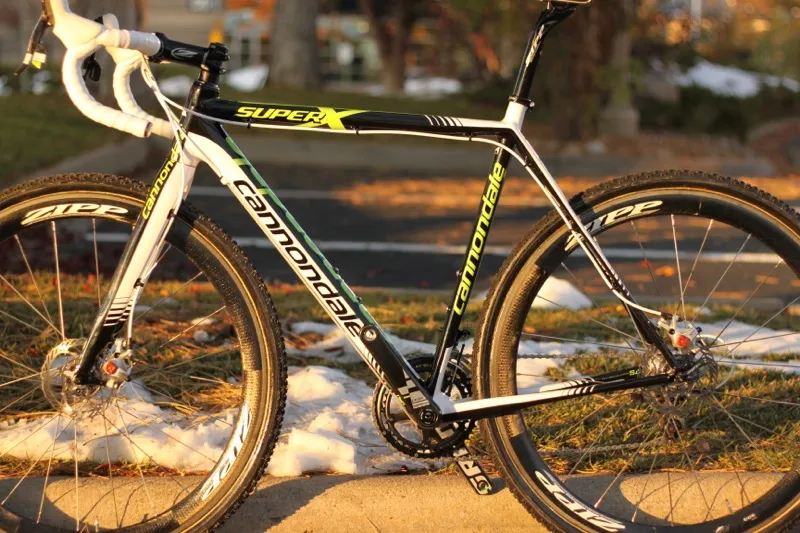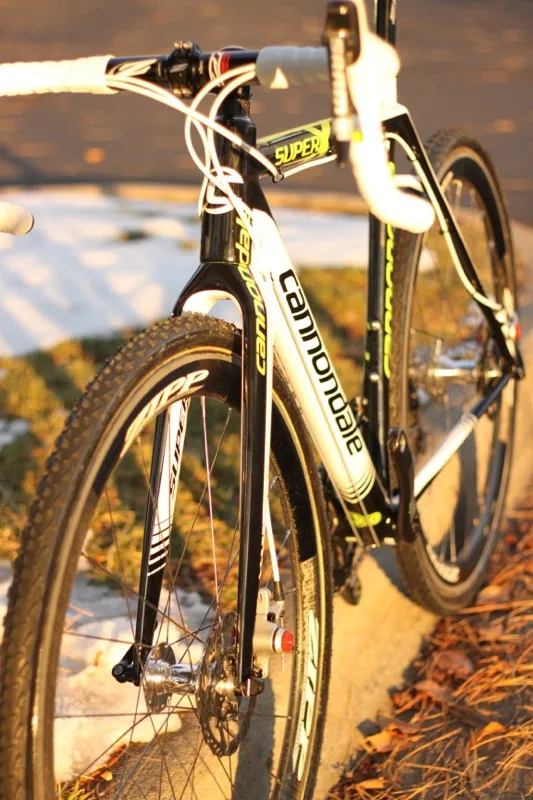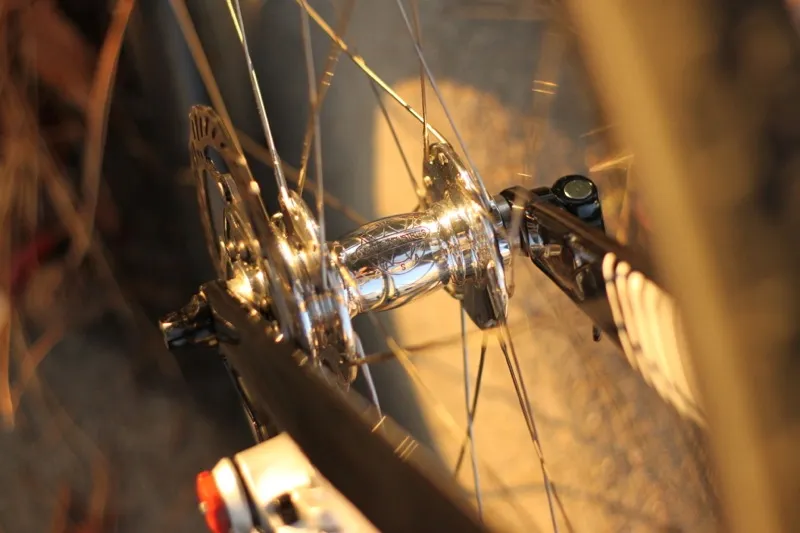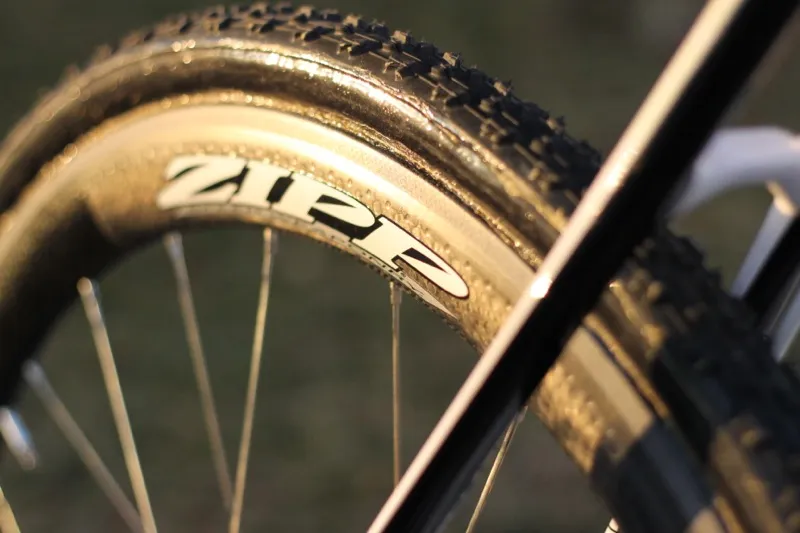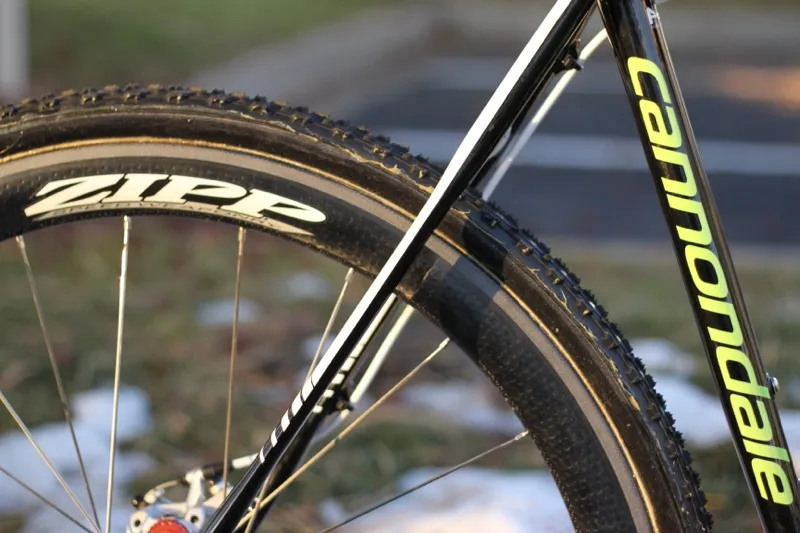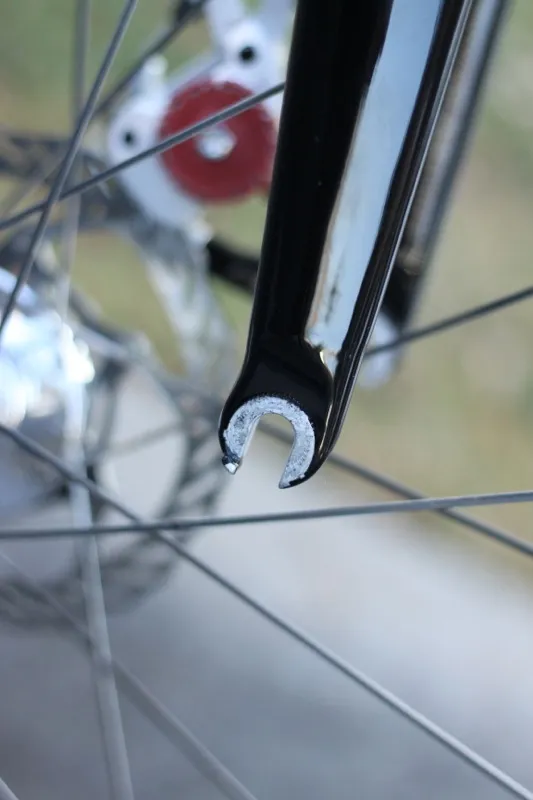Earlier in the week Cannondale-Cyclocrossworld.com team manager Stu Thorne posted a sneak peek at his outfit's latest test rig: a special disc-equipped version of Cannondale's carbon fiber SuperX. Now that the team have rolled into Boulder, Colorado for the weekend’s UCI races, we’ve had a chance to take our first look at the prototype.
In anticipation of seeing the new SuperX, we spoke to Cannondale’s vice president of R&D about the prototype frameset. He said that Tim Johnson and the Cannondale-cyclocrossworld.com team were a driving force behind its development. “I've had many discussions with Tim Johnson about disc brakes during long rides over the last couple of years, and he was always pushing us,” Peck told BikeRadar.
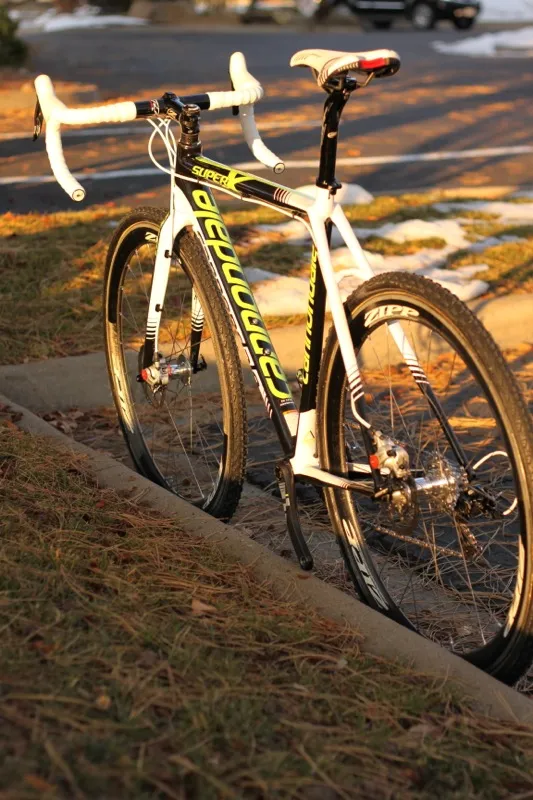
Besides the benefit of better brakes, Cannondale say they can make their Speed SAVE micro suspension work better without having to accommodate for cantilever calipers on the seatstays
“I’m all for innovation,” Johnson told BikeRadar. “I don’t think we should be afraid of it at all. The technology that goes into these bikes is only going to make it better. We’re dealing with a sport that has so many things entrenched in tradition that we can afford to branch out with a little bit of technical innovation.
“There could be a huge difference in performance and we’re just starting to see that; Fort Collins [Colorado US Gran Prix of Cyclocross] day one – perfect disc conditions. Koksijde world championship course – perfect disc brake conditions and course…
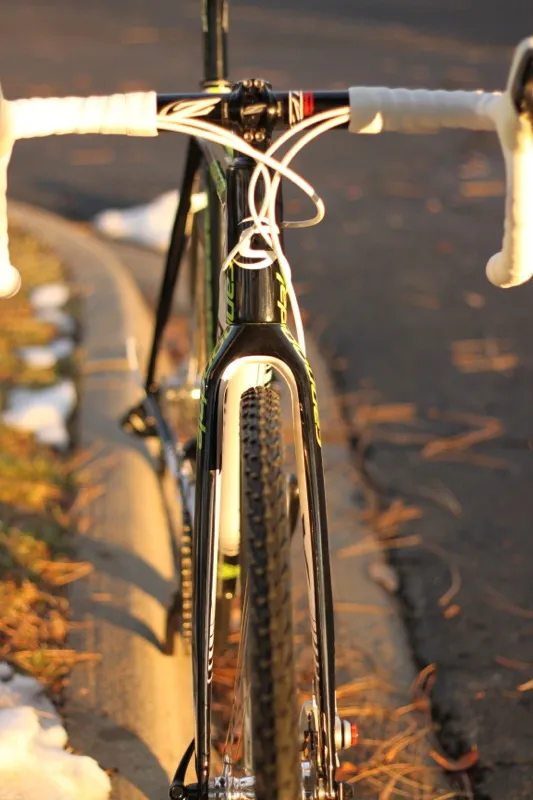
The added weight is worth it for clearance like this on a mud day
"If you have disc brakes, and you have braking where you need it and stuff isn’t getting caught up on your cantilevers, it’s going to add up. In one lap it’s an advantage, and in an entire race it'll be a huge advantage.”
Along with the benefits of better braking, Peck explained that by moving the brake calipers from the tops of the fork legs and seatstays, Cannondale have been able to further capitalize on the SuperX’s Speed SAVE micro suspension design. “By removing the cantilever mounts and reinforcements in the middle of the seatstays it allows our SAVE features to offer more vertical compliance which helps with tracking and cornering on bumpy surfaces,” he said.
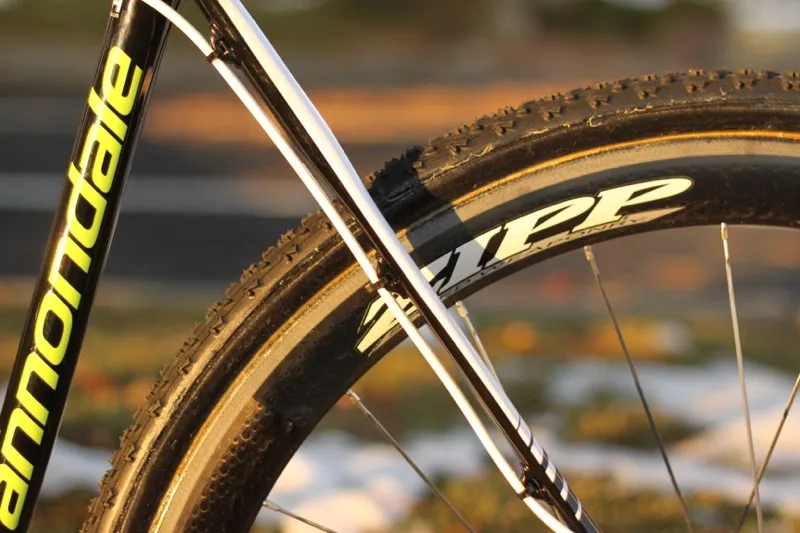
The seatstays of the prototype disc bike are considerably flatter than those of the standard production bike
While Cannondale have revealed that the fork weighs 450g, they haven't disclosed a frame weight, which has the potential to be lower than the cantilever version. The rear dropout spacing is confirmed at 135mm, which Cannondale say they've spec’d for the stronger, more durable wheels it produces.
Rotors on Johnson's bike are sized at 140mm – both front and rear – and are mounted via minimalistic direct post mounts which appear to be alloy and both bonded and riveted to the stays and non-drive fork blade. Both mounts can be spaced for 160mm rotors depending on a rider’s needs.
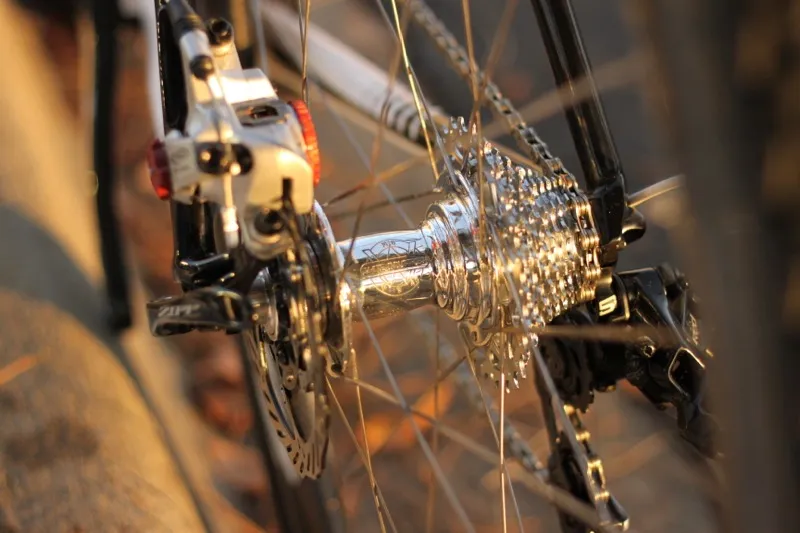
Cannondale picked the 135mm axle standard for the benefit it provides the wheel’s strength and durability
Johnson’s prototype weighed 16.42lb (7.44kg) when we previewed it – however, that was without pedals, titanium bolt kit and alloy backed brake pads, that team owner Stu Thorne had yet to install. We'll follow up once the bike is complete with its custom bits. For comparison, Johnson’s standard SuperX weighs 15.85lb (7.19kg).
Cable routing appears to one of the last things to still be in development; the prototype fork featured adhesive guides, while the rear housing was routed along the left side of the top tube, which will likely interfere when shouldering.
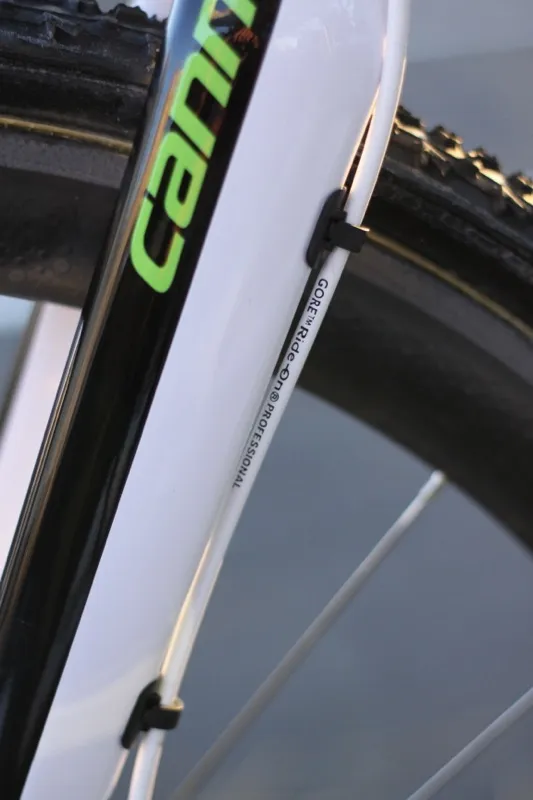
Johnson’s bike is equipped with Gore Ride On’s Professional brake system, which we found to produce one of the smoothest mechanical disc systems we’ve ever felt
This isn't Cannondale's first disc-equipped cyclo-cross bike; in 2003 they launched a CAAD series bike for the 2004 model year, simply called Cannondale Cyclocross Disc. It was banned by the UCI and thus never caught on with racers. So it’s of little surprise Cannondale are once again developing a disc brake bike for cyclo-cross.
